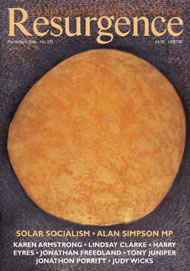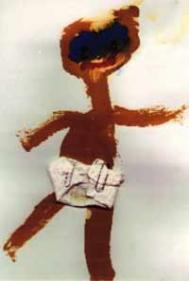EVERY DAY, WE THROW away nearly 8 million ‘disposable’ nappies, most of which end up in landfill. However, there’s no such thing as a disposable nappy - every single disposable nappy ever thrown away still exists. The plastic parts of disposable nappies can take up to 500 years to decompose, and some of the chemicals they contain aren’t biodegradable. Moreover, the manufacture of disposable nappies takes energy and raw materials, and the nappy is used once and then thrown away. So what’s the alternative?
Washable nappies
In recent years many parents have returned to reusable nappies - for environmental reasons, and also for economy: it costs £600 less per child using reusables compared to disposables. The thought of washable nappies might bring to mind an image of someone struggling to fold a square terry nappy around a wriggling baby. Thankfully times have moved on and there is a wide range of newly designed nappies on the market: you can choose from Bumble and Bimples, Tots Bots Fluffles, Bumhuggers and Motherease, amongst others. No more pins - instead velcro and other clever and fuss-free fastenings make life easier. Some companies, such as Team Lollipop, have representatives (read ‘mothers’) who are happy to visit parents, show the range available and offer advice on different systems.
As for washing, once you have found a particular ‘system’ of washable nappies that suits you and your baby, twenty-four nappies will last for three to four days. One nappy bucket, no smells, and two washes a week. If you prefer the laundry route, there are also nappy washing services available in some areas of the UK.
Disposables
Many parents are still sticking with disposables, or using a mixture of both washable nappies and disposables. So what are the main concerns with disposables apart from the high resource and energy costs, and disposal problems? Chemicals. Absorbent gels can dry a baby’s skin and are also non-biodegradable. Meanwhile, bleach and whiteners are used as well as other chemical additives such as plastics and perfumes. These have their own problems for the environment, both in terms of their production and their disposal, as well as possibly posing a hazard to a baby’s health.
The good news is that there are a few disposables on the market which are free of bleach or chlorine. Moltex Öko are unbleached, low-chemical nappies which contain a high percentage of biodegradable materials. Nature Boy & Girl also use less chemicals and derive 70% of the ingredients from renewable and natural materials. Tushies perform well environmentally as they are chlorine- and chemical-free. Many eco-disposables can be composted at home, rather than being added to landfill. Special nappy composters are also available.
Brands to avoid
The disposable nappies market is dominated by two companies, neither of which performs particularly well ethically. Kimberly-Clark Corporation is the company behind the Huggies brand of nappies. It has been criticised for its polluting factories in the US. Campaigners are also targeting it for using ‘virgin’ fibre (instead of recycled) for its disposable tissue products, including paper from North America’s ancient boreal forests. These forests, as well as being areas of outstanding beauty and home to wildlife such as wolves, eagles and bears, are essential in fighting climate change. Yet companies including Kimberly-Clark turn these ancient trees into products that are flushed down the toilet or thrown away. The other major player in the nappy market is Procter & Gamble (Pampers), currently the subject of a boycott because of its continued testing on animals of a range of its products.
Disposable or reusable?
Do reusable nappies, after all the washing cycles, have a lower environmental footprint than disposables? A recent study by the UK Environment Agency proclaimed that there was little or no difference between disposable and resuable nappies. Yet the Women’s Environmental Network (WEN) argue that the report was seriously flawed and based on poor-quality data.
WEN suggest that you can reduce your global warming impact by using an ‘A’-rated washing machine and washing nappies at 60°C. They also suggest you air-dry your nappies, use an eco-detergent and avoid using conditioner because it reduces absorbency. Other suggestions include using second-hand nappies and passing nappies on once your child no longer needs them. (Believe it or not, there is a thriving market in second-hand nappies.) The production of cotton nappies does have an environmental impact, as cotton crops use large amounts of pesticide. For this reason, organic cotton nappies would be a better environmental choice. There are a number of smaller companies selling organic cotton nappies and you can even buy hemp nappies. Happy changing!
With thanks to Ruth Rosselson for research assistance.
For more information:
Women’s Environmental Network: www.wen.org.uk/nappies/index.htm
Team Lollipop:
The website of the Absorbent Hygiene Products Manufacturers Association (AHPMA) provides the other side of the argument: www.nappyinformationservice.com
Ethical Consumer magazine looks at the companies behind the brands: www.ethicalconsumer.org
Tel: +44 (0)161 226 2929. £21/year.








